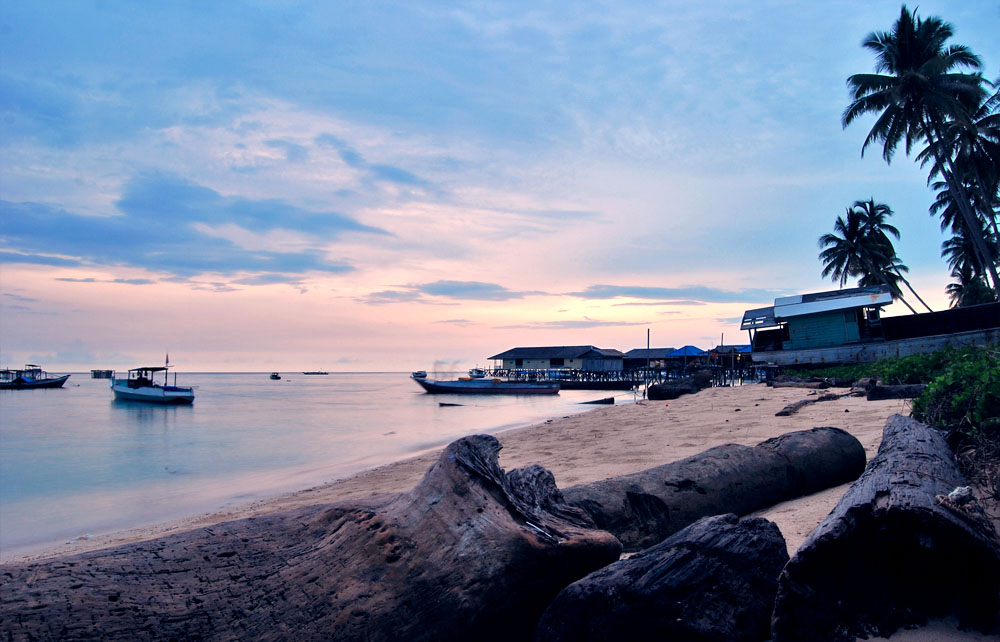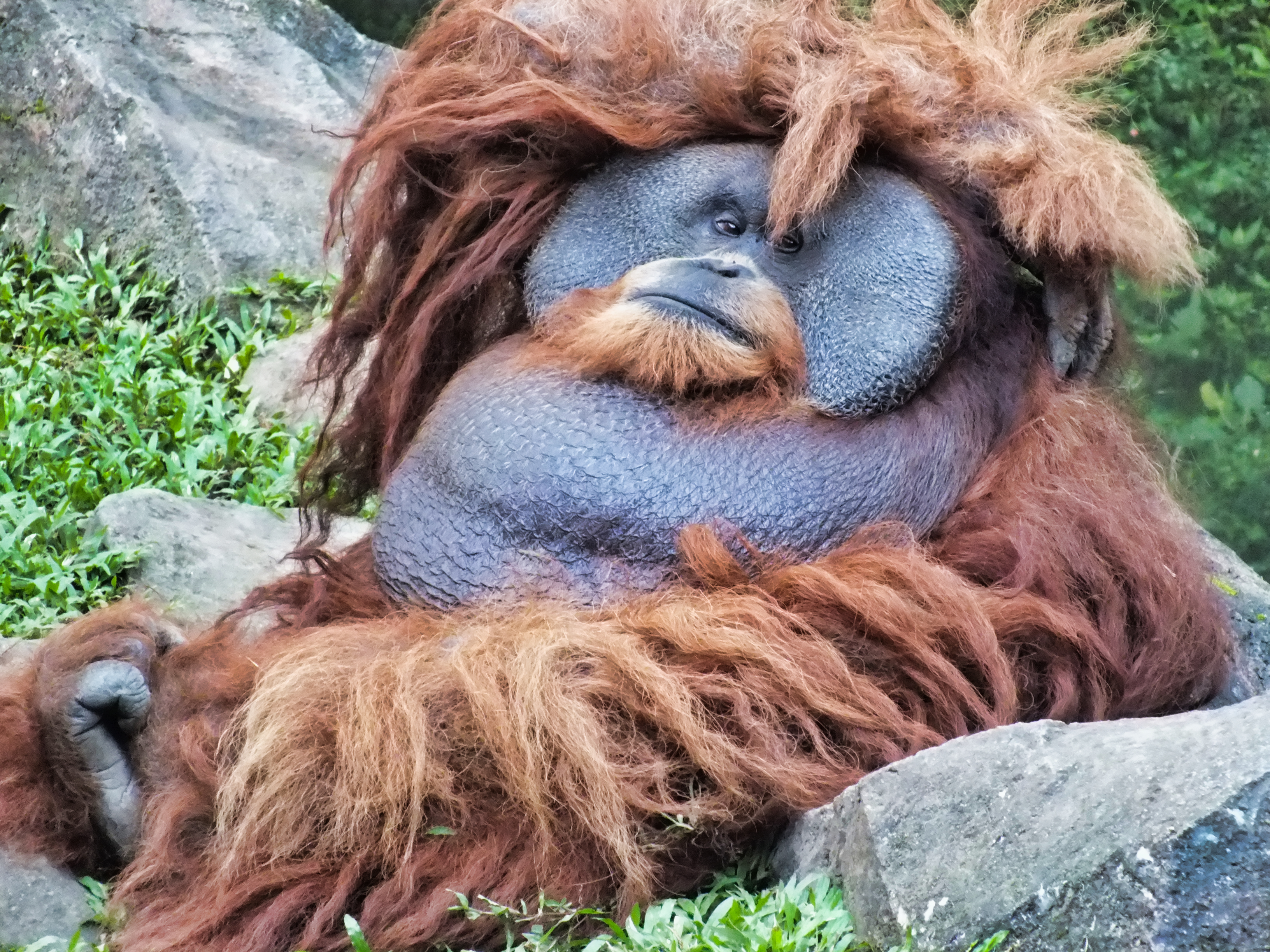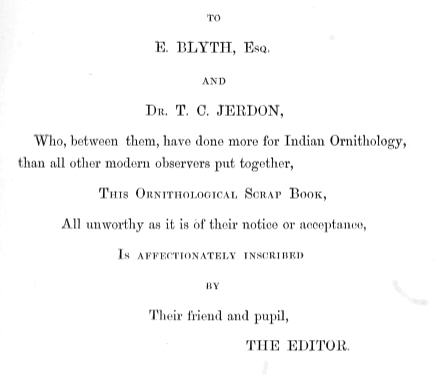|
Black-headed Bulbul
The black-headed bulbul (''Brachypodius melanocephalos'') is a member of the bulbul family, Pycnonotidae. It is found in forests in south-eastern Asia. Taxonomy The black-headed bulbul was formally described in 1788 by the German naturalist Johann Friedrich Gmelin in his revised and expanded edition of Carl Linnaeus's ''Systema Naturae''. He placed it with the shrikes in the genus ''Lanius'' and coined the binomial name ''Lanius melanocephalos''. The specific epithet combines the Ancient Greek ''melas'' meaning "black" with ''-kephalos'' meaning "-headed". Gmelin based his account on the "black-headed shrike" that had been described and illustrated in 1781 by the English ornithologist John Latham in his multi-volume work ''A General Synopsis of Birds''. Latham did not specify the origin of his specimen but Gmelin gave the locality as the Sandwich Islands. This was an error and the type locality was designated as Sumatra by the Harry Oberholser in 1912. Earlier in his book G ... [...More Info...] [...Related Items...] OR: [Wikipedia] [Google] [Baidu] |
Johann Friedrich Gmelin
Johann Friedrich Gmelin (8 August 1748 – 1 November 1804) was a German natural history, naturalist, chemist, botanist, entomologist, herpetologist, and malacologist. Education Johann Friedrich Gmelin was born as the eldest son of Philipp Friedrich Gmelin in 1748 in Tübingen. He studied medicine under his father at University of Tübingen and graduated with a Master's degree in 1768, with a thesis entitled: ', defended under the presidency of Ferdinand Christoph Oetinger, whom he thanks with the words '. Career In 1769, Gmelin became an adjunct professor of medicine at University of Tübingen. In 1773, he became professor of philosophy and adjunct professor of medicine at University of Göttingen. He was promoted to full professor of medicine and professor of chemistry, botany, and mineralogy in 1778. He died in 1804 in Göttingen and is buried there in the Albanifriedhof, Albani cemetery with his wife Rosine Louise Gmelin (1755–1828, née Schott). Johann Friedrich Gm ... [...More Info...] [...Related Items...] OR: [Wikipedia] [Google] [Baidu] |
International Code Of Zoological Nomenclature
The International Code of Zoological Nomenclature (ICZN) is a widely accepted Convention (norm), convention in zoology that rules the formal scientific name, scientific naming of organisms treated as animals. It is also informally known as the ICZN Code, for its formal author, the International Commission on Zoological Nomenclature (which shares the acronym "ICZN"). The rules principally regulate: * How names are correctly established in the frame of Binomial nomenclature, binominal nomenclature * How to determine whether a given name is Available name, available * Which available name must be used in case of name conflicts (Valid name (zoology), valid name) * How scientific literature must cite names Zoological nomenclature is independent of other systems of nomenclature, for example botanical nomenclature. This implies that animals can have the same generic names as plants (e.g. there is a genus ''Abronia (other), Abronia'' in both animals and plants). The rules and re ... [...More Info...] [...Related Items...] OR: [Wikipedia] [Google] [Baidu] |
Derawan Islands
The Derawan Islands () are in the province of East Kalimantan in Indonesia. They consist of 31 islands, most well known among these are the islands of Derawan, Kakaban, Maratua, and Sangalaki. There are also numerous submerged reefs and islets. They are located in the Sulawesi Sea, on the coastal shelf of East Kalimantan (2°17′N – 118°13′E). The islands are part of the Berau Regency. Biodiversity Derawan islands is part of the Coral Triangle, which contains some of the richest marine biodiversity on earth. Located in a biodiversity hotspot, the Derawan Islands feature 872 species of reef fishes, 507 species of coral, and invertebrates, including protected species (5 giants clam species, 2 sea turtles, coconut crab, etc.). Some of the islands harbor the heavily exploited turtle eggs and yet the largest green turtle nesting site in Indonesia. Stingless jellyfish Derawan Islands have at least two lakes containing Jellyfish#Toxicity, stingless jellyfish, one in Kakaban Isl ... [...More Info...] [...Related Items...] OR: [Wikipedia] [Google] [Baidu] |
James Lee Peters
James Lee Peters (August 13, 1889 – April 19, 1952) was an American ornithologist. He was born in Boston, Massachusetts to Dr. Austin Peters and Francis Howie Lee on August 13, 1889. His early education was at the Roxbury Latin School, followed by his acceptance to Harvard University, where he graduated in 1912. Peters interest in natural history developed early. His early collecting trips included traveling with Arthur Cleveland Bent, Charles Haskins Townsend and H.K. Job to the Magdalen Islands. Three of Peters early mentors were Charles Johnson Maynard, judge Charles Jenney and Outram Bangs.Wetmore, A. " In Memoriam: James Lee Peters" The Auk. Vol. 74. No. 2, April 1957 Ultimately, Peters was Curator of Birds at the Museum of Comparative Zoology, at Harvard University. He served as president of the American Ornithologists' Union in 1942–45, and also served as president of International Commission on Zoological Nomenclature for a period. Peters is best known for his mul ... [...More Info...] [...Related Items...] OR: [Wikipedia] [Google] [Baidu] |
Outram Bangs
Outram Bangs (January 12, 1863 – September 22, 1932) was an American zoologist. Biography Bangs was born in Watertown, Massachusetts, as the second son of Edward and Annie Outram (Hodgkinson) Bangs. He studied at Harvard from 1880 to 1884, and became Curator of Mammals at the Harvard Museum of Comparative Zoology in 1900. He died at his summer home at Wareham, Massachusetts. Works"The Florida Deer" ''Proceedings of the Biological Society of Washington'' 10:25–28 (1896)''The hummingbirds of the Santa Marta Region of Colombia''American Ornithologists' Union, New York (1899)"The Florida Puma" ''Proceedings of the Biological Society of Washington'' 13:15–17. (1899)"The Mammals and Birds of the Pearl Islands, Bay of Panama" ''Harvard University Museum of Comparative Zoology, Bulletin 46'' (8) : 137–160 (1905) with John Eliot Thayer"Notes on the Birds and Mammals of the Arctic Coast of East Siberia" ''New England Zoological Club, Proceedings'', 5 : 1–66 (1914) with Glove ... [...More Info...] [...Related Items...] OR: [Wikipedia] [Google] [Baidu] |
Java
Java is one of the Greater Sunda Islands in Indonesia. It is bordered by the Indian Ocean to the south and the Java Sea (a part of Pacific Ocean) to the north. With a population of 156.9 million people (including Madura) in mid 2024, projected to rise to 158 million at mid 2025, Java is the world's List of islands by population, most populous island, home to approximately 55.7% of the Demographics of Indonesia, Indonesian population (only approximately 44.3% of Indonesian population live outside Java). Indonesia's capital city, Jakarta, is on Java's northwestern coast. Many of the best known events in Indonesian history took place on Java. It was the centre of powerful Hindu-Buddhist empires, the Islamic sultanates, and the core of the colonial Dutch East Indies. Java was also the center of the History of Indonesia, Indonesian struggle for independence during the 1930s and 1940s. Java dominates Indonesia politically, economically and culturally. Four of Indonesia's eig ... [...More Info...] [...Related Items...] OR: [Wikipedia] [Google] [Baidu] |
Bawean
Bawean () is an List of islands of Indonesia, island of Indonesia located approximately north of Surabaya in the Java Sea, off the coast of Java. It is administered by Gresik Regency of East Java province. It is approximately in diameter and is circumnavigated by a single narrow road. Bawean is dominated by an extinct volcano at its center that rises to above sea level. Its population as of the 2010 Census was about 70,000 people, but more than 26,000 of the total (that is about 70% of the male population) were temporarily living outside, working in other parts of Indonesia, Singapore and Malaysia. As a result, females constituted about 77% of the actual population of the island, which is thus often referred to as "the Island of Women" (). The 2020 Census revealed a population of 80,289,Badan Pusat Statistik, 2021. while the official estimate as at mid 2024 was 85,320.Badan Pusat Statistik, Jakarta, 28 February 2025, ''Kabupaten Gresik Dalam Angka 2025'' (Katalog-BPS 1102001. ... [...More Info...] [...Related Items...] OR: [Wikipedia] [Google] [Baidu] |
Otto Finsch
Friedrich Hermann Otto Finsch (8 August 1839, Warmbrunn – 31 January 1917, Braunschweig) was a German ethnographer, natural history, naturalist and colonial explorer. He is known for a two-volume monograph on the parrots of the world which earned him a doctorate. He also wrote on the people of New Guinea and was involved in plans for German colonization in Southeast Asia. Several species of bird (such as ''Oenanthe finschii'', ''Iole finschii'', ''Psittacula finschii'') are named after him as also the town of Finschhafen in Morobe Province, Papua New Guinea and a crater on the Moon. Biography Finsch was born at Cieplice Śląskie-Zdrój, Bad Warmbrunn in Silesia to Mortiz Finsch and Mathilde née Leder. His father was in the glass trade and he too trained as a glass painter. An interest in birds led him to use his artistic skills for the purpose. Finsch went to Budapest in 1857 and studied at the Eötvös Loránd University, Royal Hungarian University, earning money by preparing ... [...More Info...] [...Related Items...] OR: [Wikipedia] [Google] [Baidu] |
Greater Sunda Islands
The Greater Sunda Islands (Indonesian language, Indonesian and Malay language, Malay: ''Kepulauan Sunda Besar'') are four tropical islands situated within the Indonesian Archipelago, in the Pacific Ocean. The islands, Borneo, Java, Sulawesi and Sumatra, are internationally recognised for their ecological diversity and rich culture. Together with the Lesser Sunda Islands to their southeast, they comprise the archipelago known as the Sunda Islands. Mainly part of Indonesia, each island is diverse in its ethnicity, culture and biological attributes. The islands have a long and rich history which has shaped their cultural backgrounds. Etymology The term "Sunda" has been traced back to ancient times. According to Koesoemadinata, Professor Emeritus of Geology at the Bandung Institute of Technology (ITB), the name "Sunda" originates from the Sanskrit word "Cuddha," meaning white. Reinout Willem van Bemmelen, another geologist, noted that during the Pleistocene era, there was a large vol ... [...More Info...] [...Related Items...] OR: [Wikipedia] [Google] [Baidu] |
Subspecies
In Taxonomy (biology), biological classification, subspecies (: subspecies) is a rank below species, used for populations that live in different areas and vary in size, shape, or other physical characteristics (Morphology (biology), morphology), but that can successfully interbreed. Not all species have subspecies, but for those that do there must be at least two. Subspecies is abbreviated as subsp. or ssp. and the singular and plural forms are the same ("the subspecies is" or "the subspecies are"). In zoology, under the International Code of Zoological Nomenclature, the subspecies is the only taxonomic rank below that of species that can receive a name. In botany and mycology, under the International Code of Nomenclature for algae, fungi, and plants, other infraspecific name, infraspecific ranks, such as variety (botany), variety, may be named. In bacteriology and virology, under standard International Code of Nomenclature of Prokaryotes, bacterial nomenclature and virus clas ... [...More Info...] [...Related Items...] OR: [Wikipedia] [Google] [Baidu] |
Andaman Bulbul
The Andaman bulbul (''Brachypodius fuscoflavescens'') is a member of the bulbul family of passerine birds. It is endemic to the Andaman Islands. It has a mainly olive-yellow plumage and has most of the head olive. It feeds on small fruit and berries, but will also take insects. Until 2008, the Andaman bulbul was considered as a subspecies of the black-headed bulbul The black-headed bulbul (''Brachypodius melanocephalos'') is a member of the bulbul family, Pycnonotidae. It is found in forests in south-eastern Asia. Taxonomy The black-headed bulbul was formally described in 1788 by the German naturalist Jo .... References *Rasmussen, P.C., and J.C. Anderton (2005). ''Birds of South Asia. The Ripley Guide. Volume 2: Attributes and Status.'' Smithsonian Institution and Lynx Edicions, Washington D.C. and Barcelona. Andaman bulbul Birds of the Andaman Islands Endemic fauna of the Andaman Islands Andaman bulbul Endemic birds of India {{Pycnonotidae-stub ... [...More Info...] [...Related Items...] OR: [Wikipedia] [Google] [Baidu] |
Edward Blyth
Edward Blyth (23 December 1810 – 27 December 1873) was an English zoologist who worked for most of his life in India as a curator of zoology at the Asiatic Society, Royal Asiatic Society of Bengal in Calcutta. He set about updating the museum's catalogues, publishing a ''Catalogue of the Birds of the Asiatic Society'' in 1849. He was prevented from doing much fieldwork himself, but received and described bird specimens from Allan Octavian Hume, A.O. Hume, Samuel Tickell, Robert Swinhoe among others. His ''Natural History of the Cranes'' was published posthumously in 1881. Early life and work On 23 December 1810, Blyth was born in London. His father, a cloth merchant, clothier, died in 1820 and his mother sent him to Dr. Fennell's school in Wimbledon, London, Wimbledon. He took an interest in reading, but was often to be found spending time in the woods nearby. Leaving school in 1825, he went to study chemistry, at the suggestion of Dr. Fennell, in London under Dr. Keating at S ... [...More Info...] [...Related Items...] OR: [Wikipedia] [Google] [Baidu] |







